Related Research Articles
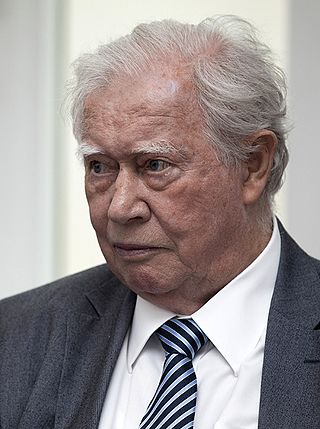
Hans Mommsen was a German historian, known for his studies in German social history, for his functionalist interpretation of the Third Reich, and especially for arguing that Adolf Hitler was a weak dictator. Descended from Nobel Prizewinning historian Theodor Mommsen, he was a member of the Social Democratic Party of Germany.

Sonthofen is the southernmost town of Germany, located in the Oberallgäu region of the Bavarian Alps. Neighbouring Oberstdorf is situated 14 km farther south but is not classified as a town. In 2005, Sonthofen was awarded "Alpenstadt des Jahres". The town has 21,300 inhabitants.
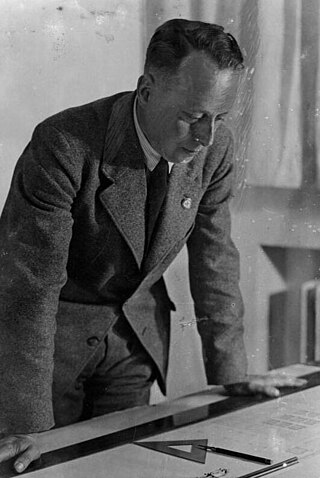
Hermann Giesler was a German architect during the Nazi era, one of the two architects most favoured and rewarded by Adolf Hitler.
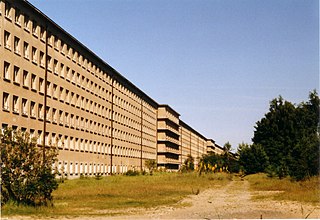
Clemens Klotz was one of Adolf Hitler's architects.
Franz Reinhold Schwede was a Nazi German politician, Oberbürgermeister of Coburg and both Gauleiter and Oberpräsident of Pomerania. An early supporter of Adolf Hitler in Coburg, Schwede used intimidation and propaganda to help elect the first Nazi-majority local government in Germany. This contributed to a personality cult surrounding Schwede and he became known as "Franz Schwede-Coburg." During World War II he ordered secret executions of the infirm and mass deportations of Jews. He also played a key role in abandoning the Pomeranian civilian population to the advancing Red Army, while escaping their fate himself. In 1945 he was captured by the British Army and in 1948 he was tried and convicted of war crimes.
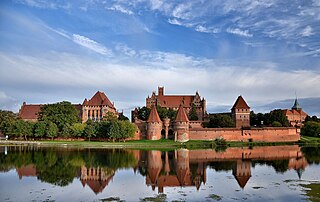
The Castle of the Teutonic Order in Malbork is a 13th-century Teutonic castle and fortress located near the town of Malbork, Poland. It is the largest castle in the world measured by land area and a UNESCO World Heritage Site.
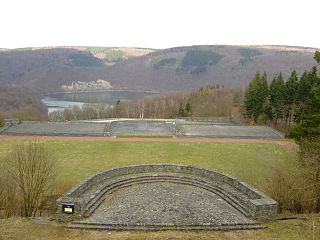
A Thingspiel was a kind of multi-disciplinary outdoor theatre performance which enjoyed brief popularity in pre-war Nazi Germany during the 1930s. A Thingplatz or Thingstätte was a specially-constructed outdoor amphitheatre built for such performances. About 400 were planned, but only about 40 were built between 1933 and 1939.
The National Socialist German Students' Union was founded in 1926 as a division of the Nazi Party with the mission of integrating University-level education and academic life within the framework of the Nazi worldview. Organized strictly in accord with the Führerprinzip as well as the principle of Machtdistanz, the NSDStB housed its members in so-called Kameradschaftshäusern, and had its members decked out in classic brown shirts and its own distinctive Swastika emblems.

Ordensburg Vogelsang is a former Nazi complex located within the former military training area of Vogelsang in the Eifel National Park in North Rhine-Westphalia. The landmarked and fully preserved complex was used by the Nazi Party between 1936 and 1939 as an educational centre for future leaders. Since 1 January 2006 the area has been open to visitors. It is one of the largest architectural relics of Nazi Germany. The total area of the listed buildings is 50,000 m2.

The Ordensburg Sonthofen is one of the NS-Ordensburgen built during the Third Reich in Sonthofen (Oberallgäu). Currently it belongs to the Bundeswehr and is named Generaloberst-Beck-Kaserne.

Ordensburg Krössinsee was the first of three NS-Ordensburgen, educational centers constructed in Germany in the 1930s for cadres of the Nazi Party. It was built near what was then the city of Falkenburg in Pomerania, today Złocieniec in Poland.

Gau Swabia, formed on 1 October 1928, was an administrative division of Nazi Germany in Swabia, Bavaria, from 1933 to 1945. From 1928 to 1933, it was the regional subdivision of the Nazi Party in that area.

The Kyffhäuserbund is an umbrella organization for war veterans' and reservists' associations in Germany based in Rüdesheim am Rhein. It owes its name to the Kyffhäuser Monument, a memorial built on the summit of the 473 m high Kyffhäuser mountain near Bad Frankenhausen in the state of Thuringia in central Germany.

Ruins of the Reich is a documentary series that traces the rise and fall of the Third Reich through its architecture. Written and directed by film maker R. J. Adams, the film's "then and now" format focuses on the primary sites that played key roles from Hitler's rise to his final days in his Berlin bunker.

The Hartheim killing centre was a killing facility involved in the Nazi programme known as Aktion T4, in which German citizens deemed mentally or physically unfit were systematically murdered with poison gas. Often, these patients were transferred from other killing facilities such as the Am Spiegelgrund clinic in Vienna. This was initially a programme of "involuntary euthanasia" permitted under the law ostensibly to enable the lawful and painless killing of incurably ill patients; these murders continued even after the law was rescinded in 1942. Other victims included Jews, Communists and those considered undesirable by the state. Concentration camp inmates who were unfit for work, or otherwise deemed troublesome, were also executed here. The facility was housed in Hartheim Castle in the municipality of Alkoven, near Linz, Austria, which now is a memorial site and documentation centre.

Adolf Hitler Schools (AHS) were 12 day schools run by the SS in fascist Germany from 1937 to 1945. Their aim was to indoctrinate young people into the ideologies of the Nazi Party. They were for young people aged 14 to 18 years old and were single sex, with three schools for girls and the rest for boys. Selection for admission to the schools was rigorous; pupils were chosen for their political dedication and physical fitness, as opposed to their academic prowess. Activities focused on political indoctrination rather than academic studies. The SS often selected future officers from the schools.
The Advanced School of the NSDAP was a project by the chief ideologist of the Nazi Party Alfred Rosenberg to create an elite Nazi university, a kind of academy for party officials. A monumental central university building was to be built on the shores of Lake Chiemsee, based on the architectural plans of Hermann Giesler.

Nazi architecture is the architecture promoted by Adolf Hitler and the Nazi regime from 1933 until its fall in 1945, connected with urban planning in Nazi Germany. It is characterized by three forms: a stripped neoclassicism, typified by the designs of Albert Speer; a vernacular style that drew inspiration from traditional rural architecture, especially alpine; and a utilitarian style followed for major infrastructure projects and industrial or military complexes. Nazi ideology took a pluralist attitude to architecture; however, Hitler himself believed that form follows function and wrote against "stupid imitations of the past".

The Saarschleife, also known as the Great Bend in the Saar at Mettlach, is a water gap carved by the Saar River through a quartzite layer and today one of the most well-known tourist attractions of the Saarland.
During the National Socialist era in Germany, the NS selective schools served to recruit and train young Nazi Party members. There were three types of selective schools:
References
- ↑ Pine, Lisa. 2010. Education in Nazi Germany. Oxford: Berg, 2010.
- ↑ Speer, Albert. 1970. Inside the Third Reich. Page 147.